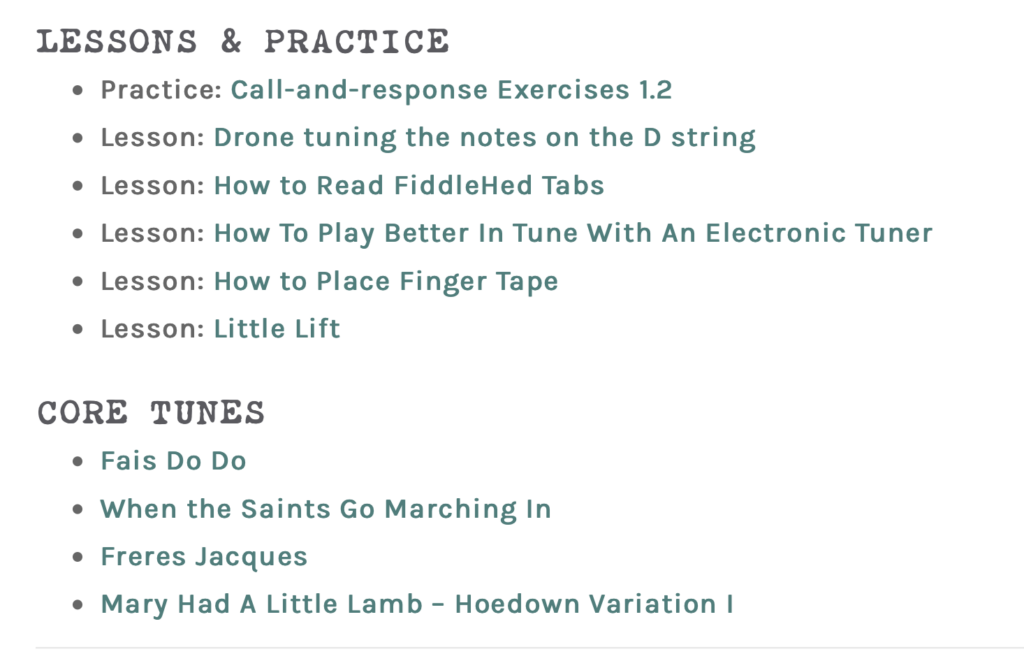Where do I start in the course?
Good question!
If you’re an absolute beginner, then just start with Start Fiddling Now (Module 1.1).
In the text below, I’ll give you a rough breakdown of the skills and techniques learned in each part of the course. If you’ve already started to learn, you may have to do a little trial-and-error to find the best starting point. As usual, I suggest erring on the side of starting with more “beginner” lessons. The word “beginner” is in quotes because you can always approach learning as a beginner.
Modules 1.1 through 1.5.
At each step of the way you’ll learn tunes that help you practice the specific techniques you’re working on:
- The first, second and third left-hand finger positions for the G, D, A, and E strings.
- How to play in tune using drones.
- Ear training with call-and-response exercises
- Tone-building exercises
- Intervals
- Transposing tunes to other strings
- Pentatonic Scales
- How to practice
- Maybe the most important thing you’ll learn from FiddleHed
Modules 1.6 through 1.10:
- The slur
- This is bowing more than one note per bow. You’ll practice different slur patterns in each module: slur two, slur three, slur four, slur two-separate two.
- Singing and playing
- Pedal exercises
- This is a progressive series of left-hand exercises.
- Low second finger
- D, E and A Dorian scales
- The upper octave of the G Major scale and C Major scale
- Transposing tunes to other octaves
- Triads
Modules 2.1 through 2.4
Moving on to the Intermediate course. These are the big things you’ll learn:
- Fourth finger (pinky)
- Advanced fingering and string crossing
- Double stops (playing two strings at once)
- Simple chords
- Low first finger
- F Major scale
Modules 2.5 through 2.9:
- Low fourth finger
- B flat Major, Upper Octave
- Chord progressions and comping
- Double stop scales
- Minor triads
- Raised Third Finger
- A Major Scale, Lower Octave
- Chromatic Scale
- Syncopation
- How to Build Chords
For a more detailed breakdown, view the Beginner and the Intermediate course pages. And for an even more detailed breakdown, view the individual module pages. For example, on the 1.2 Lingering with Fingering page, you’ll see a listing of core lessons and practice. This can help you to figure out if you need to take these lessons.

Still unsure?
If you’re still unsure where to start, just email me. I’ll do my best to find a good starting place for you in the course.
